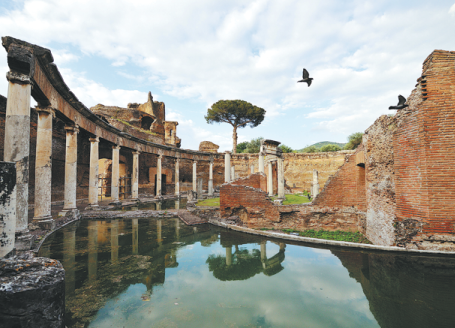Italy to lure Chinese with cultural heritage delights
Spending power of Asian travelers

ROME-Italy's National Tourism Agency, known as ENIT, on Thursday presented its annual marketing plan to promote the Mediterranean peninsula as a travel destination, with a focus on China.
"Rapidly growing markets such as Asia, especially China, and the targeting of high-net-worth young people are at the center of the new campaigns for the kind of tourism that can keep money flowing throughout the year," ENIT said in a statement.
According to ENIT figures, tourists spent 40 billion euros ($45 billion) in Italy between January and October 2019.
As part of its strategy to market itself on the Chinese market, ENIT said it plans to take a series of measures. These include opening new offices in Shanghai and Guangzhou, launching a campaign to promote Italy on WeChat, a major Chinese social media platform, and encouraging more direct flights between the two countries. It also plans to take part in several trade fairs in China to promote tourism.
"In the world there are only two cities that have two UNESCO World Heritage sites," said ENIT President Giorgio Palmucci. "One is Beijing and the other is Tivoli-and very few people know about it."
One of the two sites in Tivoli, a town near Rome in the central Lazio region, is Hadrian's Villa. The complex of classical buildings incorporates the architectural traditions of Ancient Greece, Rome and Egypt. It was created in the second century AD by Roman Emperor Hadrian.
The other site is the 16th-century Villa d'Este. Its palace and gardens constitute "one of the most remarkable and comprehensive illustrations of Renaissance culture at its most refined," according to UNESCO.
The presentation took place in Rome in collaboration with the Italian Ministry for Culture and Tourism. They sent Tourism Undersecretary Lorenza Bonaccorsi to speak.
"Tourism is an economic asset of primary importance for our country," Bonaccorsi said. According to estimates by the Bank of Italy and by European Union statistics agency Eurostat, the tourism sector employs 4.2 million people and contributes 13 percent of Italian GDP, she added.
The year 2019 was "very favorable" for the Italian tourism industry. Spending by international tourists was up by 6.6 percent, international arrivals in airports jumped 5.8 percent and overnight stays were up 4.4 percent compared to 2018, Bonaccorsi said.
The objectives of the new plan rest on three pillars: innovation, accessibility and sustainability.
Accessibility means generating new routes for tourist to travel to Italy, while sustainability means a kind of tourism that respects the territories, according to Bonaccorsi.
The plan coincides with the China-Italy Year of Culture and Tourism 2020, which is scheduled to kick off on Jan 21 in Rome.
More than 100 events will be held during the year. They include performing arts, visual arts, cultural heritage, tourism and creative design, according to China's Ministry of Culture and Tourism.
The China-Italy Year of Culture and Tourism 2020 is the first time for the countries to hold a large-scale activity on the integration of culture and tourism, said an official with the ministry.


Today's Top News
- Ukraine says latest peace talks with US, Europe 'productive'
- Asia's rise and Europe's structural decline
- Economic stability a pillar of China's national security
- Xi taps China's deep wisdom for global good
- New rules aim for platforms' healthy growth
- Chinese web literature grows overseas






























